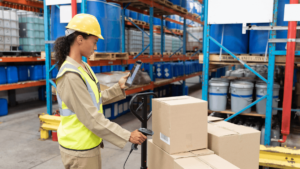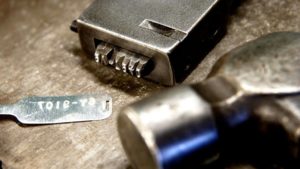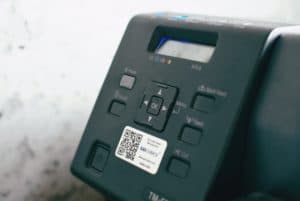Asset tracking is a critical function across various industries. Every business owns assets which are important investments, and smart asset tracking solutions aim at achieving maximum returns on this investment. Barcodes are one or two dimensional lines, consisting of dots or hexagons that represent specific data. Various types of barcodes are used across industries to keep track of assets, manage inventory and to retrieve specific product information.
In this article...
What are barcodes?
Traditionally, details of equipment or assets were entered on books, sheets or notepads and later on spreadsheets. These methods of keeping track of assets were labor intensive and prone to duplicate entries, lost or misplaced records, errors in entering data all of which impacted the bottom-line in a big way!
In 1952, Bernard Silver and Norman Woodland invented barcodes that were built on the concept of Morse code! Being a machine-readable form of data, these barcodes describe the associated object. Traditional barcodes depict data with different space and widths of vertical parallel lines that were one-dimensional (1D) or linear. Two-dimensional (2D) barcodes later came into being that used dots, hexagons or other patterns. These barcodes were read by barcode scanners or readers. They became a commercial success in 1974 when the Wrigley’s used it on their packs of chewing gum.
Choosing the right barcode
Barcodes speak a different language, and each of the barcode types differs in terms of linearity and capacity making each one of them profitable or suitable for a particular industry or usage. While there are many barcode types, choosing the right one depends on the needs of the business, the size of the product, label size and the amount of information that needs to be encoded. The other factor to consider when choosing the barcode is the regions where your business operates. Some barcodes such as UPC that stands for Universal Product Code can be scanned in many countries including the U.S., Canada, U.K., Australia and New Zealand.
If your business is entirely online, compact codes such as Code 128 that can be tracked when it is moving between the warehouses to other destinations is needed. For brick and mortar stores, EAN codes are ideal for the check-out process although these barcodes are region specific and can be scanned in Europe and Asia.
If you are looking for diverse applications not limited by geographical area, usage, the volume of data that can be stored and ease of use, QR barcodes are the ideal options.
Some of the questions to ask when choosing a barcode are:
- Where will the product be sold?
- How will the product be distributed?
- What is the size of the product or packaging?
- Which industry do you operate in?
- What kind of special equipment is needed to scan and encode?
- What are the budget constraints of the company?
- How will the barcode be printed?
- Will the barcode be used for inventory management or asset tracking?
They are now widely used in retail industry and for inventory and asset tracking in almost every business.
- Barcodes help save time and costs related to asset tracking.
- They eliminate human errors that were common when data was manually entered. Barcodes are fast, accurate and reliable.
- Barcodes are relatively inexpensive to design.
- Barcodes are flexible and can be customized. As they can be used to tag any surface, all kinds of equipment that are moved out can also be tracked easily.
- The data can be scanned directly to a central computer and is available as needed.
Types of barcodes
Code 39: As the oldest barcode, Code 39 traditionally was used across most healthcare, government, and electronics sectors for inventory tracking. It is a 1D, alphanumeric code that can be adjusted for any length to match the specific product requirement.
Code 128: This linear code is derived from American Standard Code for Information Interchange (ASCII) where 128 characters that have values ranging from 0 to 127. Shipping and packaging industries extensively use Code 128 for managing assets. Being compact, this barcode can be used to pack in huge amounts of information in the label.
Interleaved 2 of 5 (ITC): The linear barcode is used in distribution, warehouse and manufacturing, and on 135 films commercially Consisting only of numerals, Code I 2 of 5 is used to encode number pairs. One symbol is equal to a pair of two digits, with the first digit being encoded in the black lines or five bars and the second encoded in the white lines or spaces. On film canisters, the ITC is used for identification of film type, manufacturer, proprietary information and total exposures that are read when the film is fed into the barcode scanner.
Universal Product Codes (UPC): UPC was designed to make printing of receipt and inventory tracking easy for grocery stores and are found on almost all retail products. There are twelve digits in the UPC code and is used internationally.
PostNET: PostNET stands for “Postal Numerical Encoding Technique” and is specifically used by the postal service of the United States. The one-dimensional barcode encodes zip codes to facilitate sorting and delivery of mail.
PDF417: This is a barcode that is two dimensional and can store huge volume of data. It is possible to encode fingerprints, signatures, and photographs with this barcode. Driving licenses in some regions use PDF417 to code addresses, names, photographs of the driver, and driving records. Airline tickets also use this barcode.
Data Matrix: One of the other popular 2D barcode is the data matrix which is a square-shaped code. It can store huge volumes of information in compact space and is commonly used in healthcare, electronics, and manufacturing. To read this barcode, sophisticated scanners are required.
Quick response (QR) codes: QR codes is the other popular 2D barcode invented by Denso Wave in 1994 that was aimed at tracking vehicles and scanning components moving at high speeds. The original version could hold 4 characters of data while the latest QR systems can hold up to 1852 characters that can store huge volumes of data in a two-dimensional form. QR codes can hold up to hundred times as much data as compared to barcodes and can easily be digitally scanned using smartphones instead of special barcode scanners.
Standard QR codes consist of black squares that are arranged to form a square grid against a white background. While UPC barcodes can encode 12 numerals, QR codes can store significantly large volumes of data with over 7,000 numericals and 4,200 alphanumerics or 1,800 Japanese characters!
QR codes are now used virtually in every industry and application ranging from logistics, shipping, retail, ticketing, inventory and asset tracking in all other industries. QR codes are used on fliers and marketing materials to link them to social media pages or to provide reminders. Businesses use QR codes to embed directions or Google Map location on their visiting cards or to open up their website.
QR codes have also been used at a wildlife center to provide information on local flora and fauna on hiking trails!
GoCodes Asset Tracking: QR barcode made easy!
GoCodes Asset Tracking brings the most efficient system of inventory management and asset tracking with customizable QR codes that can easily and quickly be scanned using just a smartphone. The free QR scanning app can be instantly downloaded from the website to start scanning and storing huge volumes of information without the need for expensive scanners or specialized Bluetooth equipment. The flexible system allows users to scan wide-ranging equipment on Android, Windows, and iPhone. With the cloud database that is widely compatible with different devices such as tablets, personal computers, and smartphones, storing and retrieving information from any device or location is a breeze.
With the inbuilt GPS function, asset tracking on-the-go is convenient. Unlike specialized software that requires a lot of training hours and specially trained personnel, GoCodes Asset Tracking simple asset tracking solutions need no training. Being flexible and customizable, users can generate any number of QR codes.
After the assets are tagged with specific QR codes, any staff member can enter details of check in, check out, maintenance, repair or other details with a wave of their smartphone. There is no need to be located near a terminal or a Bluetooth device!
GoCodes Asset Tracking combines the best of the features of QR barcodes and smartphone-based asset tracking system that can be used to manage assets in multiple locations and geographical areas no matter where they are across the globe!
With MACRS & GAAP depreciation reporting function, fixed asset planning and budget forecasting are made easier. The patented technology used at GoCodes Asset Tracking makes it possible to prevent thefts and losses due to misplaced assets. The tamper-proof and high-quality of QR stickers make them ideally suited for all kinds of surfaces and moving equipment that has to operate in hostile weather conditions. Periodic auditing is also easy with the reports of equipment and usage history available on the cloud with just a click.
Track and manage your assets anywhere cost-effectively and efficiently using the convenient and smart GoCodes Asset Tracking asset tracking solutions!







